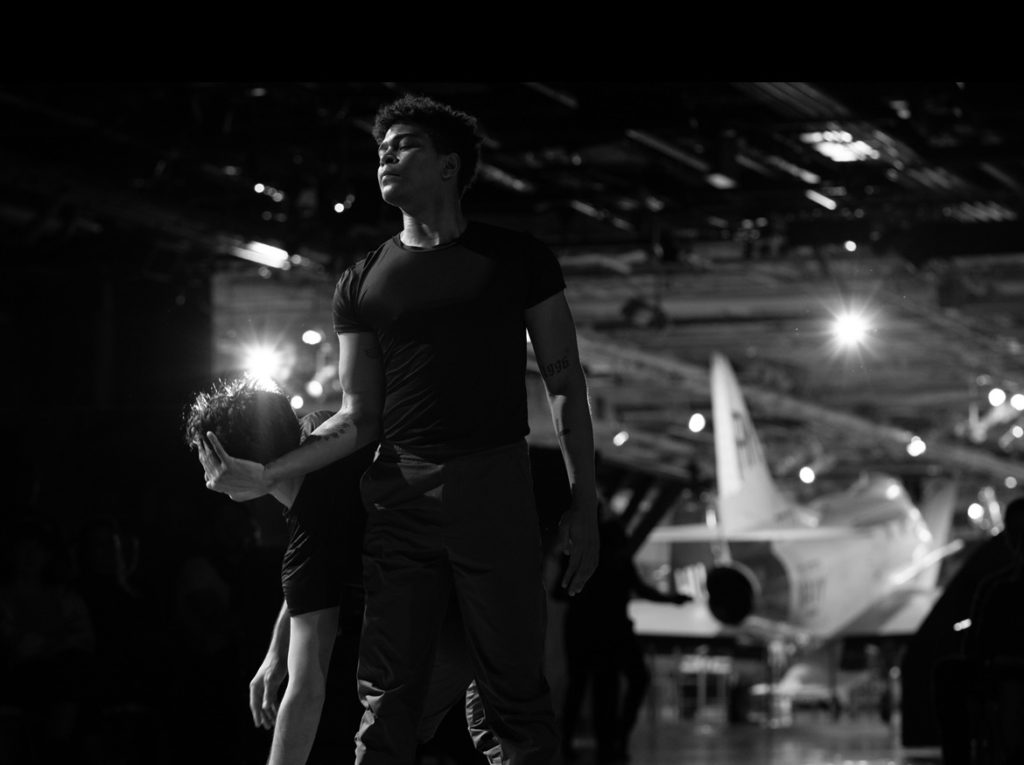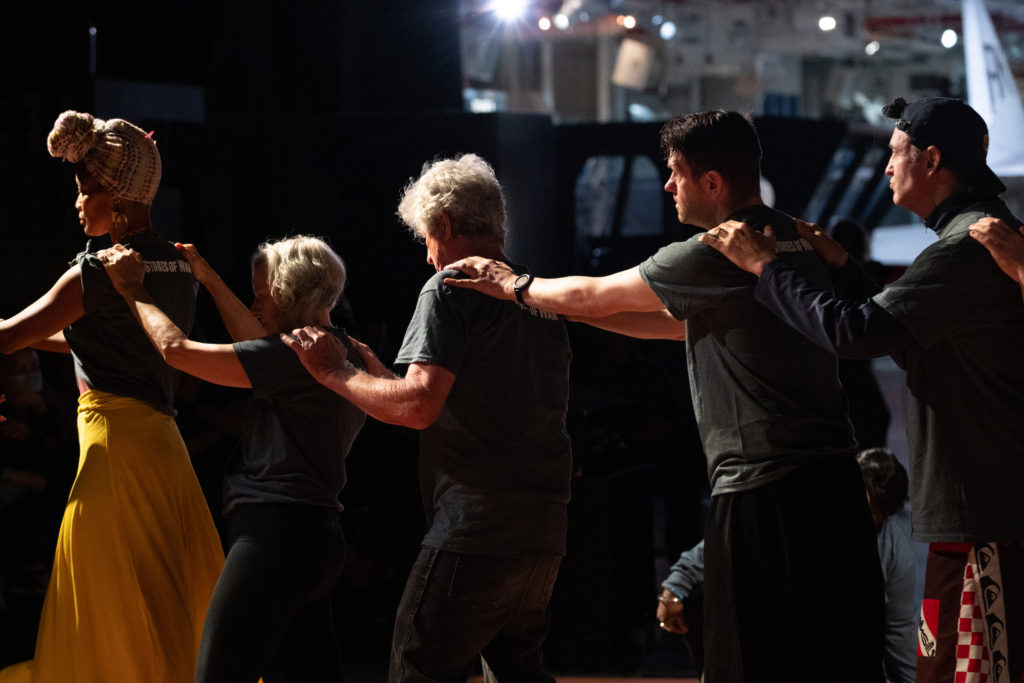In the Heart of a Warrior: Exit12 brings dance to veterans - Vancouver Ballet Society
- Home
- Features 2020 - 2023
- In the Heart of a Warrior: Exit12 brings dance to veterans

By Kathryn Boland
Elizabeth Freeman will joke with her combat veteran clients that “nothing strikes fear in the heart of a warrior like the word ‘dance’.” Yet the work of New York’s Exit12 Dance Company — with which Freeman, a dance and movement therapist, serves as a clinical safeguarding lead — demonstrates just how transformative dance can be. With 17 veterans committing suicide in the United States every day, according to a 2022 report by the Department of Veteran Affairs, that potential can be life-saving.

Roman Baca, a combat veteran, is the artistic director of Exit12. As a young man, he trained in hip-hop, jazz, and ballet. After serving in Iraq for eight years, he built a career as a professional dancer with New Mexico Ballet Company, Connecticut Dance Theatre, and others. Yet something was missing, and he craved dancing in more “socially charged” work. A friend asked: “What’s that thing in you that you’re aching to talk about through your work?” Baca, grappling with combat trauma, immediately knew the answer: stories of military service and life afterwards.
In 2007, he co-founded Exit12 with Lisa Fitzgerald, who became a dancer in the company and associate artistic director (she’s also his wife). Exit12’s shows are choreographed by Baca in collaboration with the dancers, but, early on, he realized that expressing veterans’ stories called for more voices, more perspectives. He began engaging veterans in the creative process, first only in rehearsals. Then it hit him: they could be performing as well.
In workshops, the company’s eight to 12 dancers are paired with veteran participants. Typically, workshops begin with writing about themes like parenting, childhood, service, resilience, and imagination. “We don’t explicitly point to a military theme, but much of the writing lands there anyway,” says Baca.

From there, the Exit12 team “slowly convinces” participants that dancing is something they can — and maybe even should — do. Freeman, who is present at all times to support any mental health needs that may emerge, describes how resistance to dancing begins to dissolve once they tap into participants’ familiarity with moving together through their military physical training.
During “journey mapping,” participants trace their life journey through movement. Another exercise involves making a movement sequence that spells out their name. Damasa Doyle, a Navy veteran who performed in the company’s most recent project, Truths Colliding, found that generating expressive movement to “spell out” her name was a poignant experience.

For Doyle, the community aspect of Exit12’s work brings something special to her own journey to wellness, which includes Thai bodywork, Reiki, and meditation. “We need to heal in community,” she believes, “our journey has to be witnessed.” In a process called co-regulation, our nervous systems are known to more effectively self-regulate alongside each other, explains Freeman.
Working with Exit12 is a way to imagine “different scenarios and ways of being in the world,” Baca says. This creative body-based work can help veterans re-pattern their nervous systems away from functioning that could have saved them in a combat zone, but which may not be productive or life-giving in a civilian context. One veteran noted how a combat-specific way of being in one’s body can become ingrained. “The only way I know how to move is how the military taught me,” he shared.
In an Exit12 workshop, his first movement exercise began with going through the physical tasks he would do when firing at close range. Then he showed the sequence of moves to another veteran, to which the second veteran added his movement.

“What the two participants made together embodied a transformation of healing. They came to a more lifted, confident stance and easeful, free movement,” Baca says. Finding those qualities in their bodies is a first step to finding more confidence, ease, and freedom in their lives.
Exit12 performed Truths Colliding in May 2023 on Memorial Day Weekend, at the Intrepid Sea, Air and Space Museum in New York. The American holiday commemorates those who lost their lives serving in the nation’s wars.
Baca describes Truths Colliding as “a political performance, a community dance event, and a dialogue all smashed into one.” In addition to combat veterans, the company engaged refugees, including two individuals displaced by Russia’s invasion of Ukraine, which introduced a broader range of movement. The participants’ poems, part of how their movement emerged, were integrated with the soundscape — along with music that had a distinct country twang. Their “journey maps” were part of the choreography.

Freeman says the content was allowed to slowly emerge, with the Exit12 team “providing just enough structure and creating space for whatever stories the participants needed to tell.” Lightness, even laughter, was a key part of the process despite the heaviness of the themes at hand. In order to not have veterans relive their trauma, company artists performed difficult sections while veterans embodied the parts conveying healing and joy.
Truths Colliding opens with storytelling from Baca and movement from the company dancers. Then workshop participants — veterans and refugees, men and women of all ages and body types — take the stage with the company. Their movement builds a sense of resilience, of rising above, of butterflies emerging from their cocoons.
After veterans achieve such a performance, Baca says, they can think along the lines of: “Wow, I just did that crazy thing with dancers, I wonder what else I can do!” Many are inspired to move forward in their lives.

